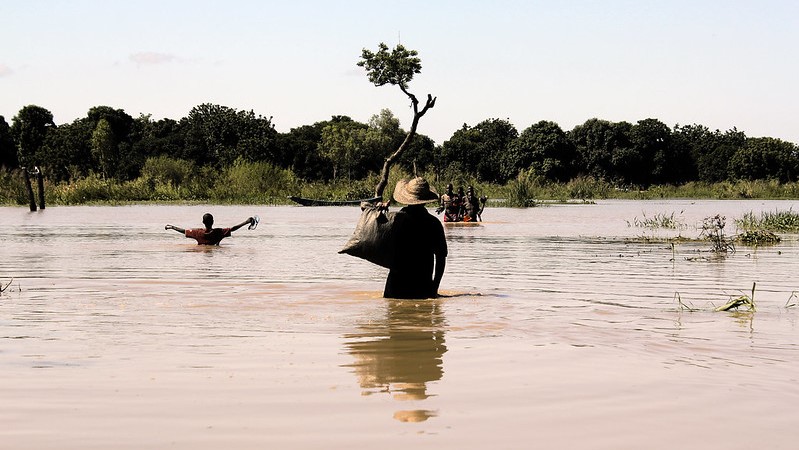Rich countries “look likely” to have met a long-overdue goal to provide $100 billion a year in climate finance to vulnerable countries in 2022, two years later than promised.
The claim made by the Organisation for Economic Co-operation and Development (OECD), which carries out an annual assessment of the pledge, is based “on preliminary and as yet unverified data” that has not been made public.
Detailed figures have been made available for 2021, when developed nations gave $89.6 billion to developing countries – a slight increase from the amount of money provided the previous year.
“Symbolic” milestone
The figures pale in comparison with the trillions of dollars that vulnerable nations are estimated to need to cut emissions and better cope with the effects of climate change. But the “symbolic” $100 billion commitment, first made in 2009 in Copenhagen, has been a continuous source of diplomatic tensions since countries failed to hit the target by the 2020 deadline.
Germany’s climate minister Jennifer Morgan told reporters she hoped this sends “a reassuring signal to our partners”.
“It is a target that we had hoped to meet earlier”, she added. “We hope that this is a foundation to perhaps build some confidence in our commitment to work together with developing countries moving forward”.
Adaptation money falls
Despite the overall increase, specific funding for adaptation declined by $4 billion to $24.6 billion. The setback casts doubts over whether developed countries will be able to meet a pledge made at Cop26 to double their provision of adaptation finance to $40.6 billion by 2025.
Poor countries heavily rely on international public finance for things like early warning systems, flood barriers or drought-resistant agriculture that are less attractive to investors than renewables.
“We have seen a reduction in finance and a stalling of flows for adaptation initiatives,” UNEP’s chief scientist Dr. Andrea Hinwood told Climate Home earlier this month. “We really must act now. It’s only with fast, urgent, consolidated action with appropriate finance flows that we have a chance to address those issues.”
Loans fuel debt fears
Vulnerable countries have long called for a significant increase in the provision of grants over loans, which they argue push them further into debt. But loans continued to represent over two-thirds of the money provided in 2021, with grants making up 30% of the total.
Harjeet Singh, Climate Action Network’s head of global political strategy, said the prevalence of loans exacerbates financial disparities. “It is imperative that rich countries radically shift their approach, focusing on providing substantive support rather than resorting to symbolic gestures”, he added.
France, Kenya set to launch Cop28 coalition for global taxes to fund climate action
Canada’s climate minister Steven Guilbeault recognised more needs to be done, saying the $100 billion goal is “an important milestone, but it does not solve all of our problems”.
“We know the conversation needs to shift from mobilizing a hundred billion dollars to mobilizing 10-15 times that. That’s what our collective challenge is”, he added.
UK aid cuts leave Malawi vulnerable to droughts and cyclones
With significantly more money unlikely to be dished out of public purses, rich countries are increasingly looking at alternative solutions. Alongside reforms of multilateral development banks, like the World Bank, big hopes are pinned on contributions from the private sector.
But the latest OECD data risks dampening some of that enthusiasm. Private capital mobilised through public incentives, such as guarantees, has broadly stagnated since 2017, with only $14.4 billion made available to developing countries last year.
